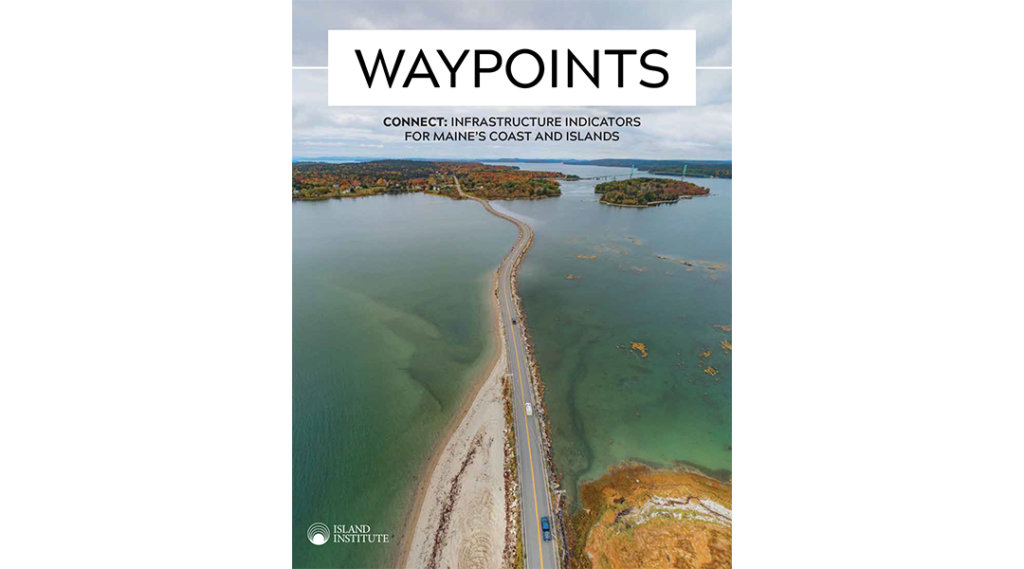ROCKLAND, ME – The Island Institute has published Waypoints: Connect – Infrastructure Indicators for Maine’s Coast and Islands, the latest edition in the Waypoints series, highlighting key aspects of Maine’s coastal infrastructure systems, focusing on topics where local and state leaders are grappling with change.
The featured topics in this infographic-rich publication include: broadband, transportation, energy, trade, working waterfronts, and civic infrastructure. The publication helps coastal and island leaders make data-driven decisions and tell compelling stories of what distinguishes their communities. Indicators that are central to our physical, economic, and civic infrastructure are visualized to help consider how human assets, organizational entities, and networks connect coastal communities to resources that help them thrive.
Age, income, and self-employment trends, combined with small populations, distinguish the coast and islands from the rest of the state and nation. Smaller, rural communities have capacity and financial challenges that can limit investments in infrastructure and economic development. It’s difficult for these communities to change demographic pressures themselves. This prompts a need for creative approaches to infrastructure financing, trade relations, and civic networks to bridge resource gaps.
“Waypoints: Connect presents compelling, often never-before-seen data to communicate defining aspects of Maine’s coastal and island communities. Whether you’re looking to present at a town meeting, submit a grant application, create testimony, or speak to the press, we hope that Waypoints will help you tell a compelling story about your community. This piece is a must-read for anyone working to shape the future of our coast,” said Suzanne MacDonald, chief community development officer at the Island Institute.
Key takeaways include:
CHANGE IS CONSTANT AND UNPREDICTABLE: Species shifts impact where fishing activity takes place. Changes in trade policy alter where goods are exported. Managing the unknowns when planning for infrastructure upgrades can be challenging, especially for small communities.
YANKEE INGENUITY MATTERS: One-third of the coast lacks a strong economic case to build out 21st century internet service, yet communities are utilizing local financing options and public-private partnerships to get the job done. Creativity and resourcefulness are key to meeting infrastructure needs.
REGIONAL THINKING IS REQUIRED: The state of infrastructure in one community often has implications for those surrounding it. Regional collaboration can help unlock more durable solutions.
INFRASTRUCTURE IMPROVEMENTS ARE NOT MONOLITHIC: Progress can be made incrementally to drive towards a larger shift. Programs that direct investment in sustainable options in heating, waterfront protections, and broadband are moving the needle on the coast of Maine.
Data in this publication have been aggregated and analyzed by the Community Data team at the Island Institute and articulated through maps and infographics illustrating the unique qualities of Maine’s coastal and island communities. Additionally, more detailed data on island and coastal communities is available online in the supplementary data tables allowing users to access additional information.
As the future of Maine’s economy takes shape, the Island Institute aims to highlight the significance of the Maine coast through objective, reliable information and is committed to tracking these data over time.
The latest Waypoints publication, along with its supporting datasets and resources, is available online at: www.islandinstitute/waypoints.


